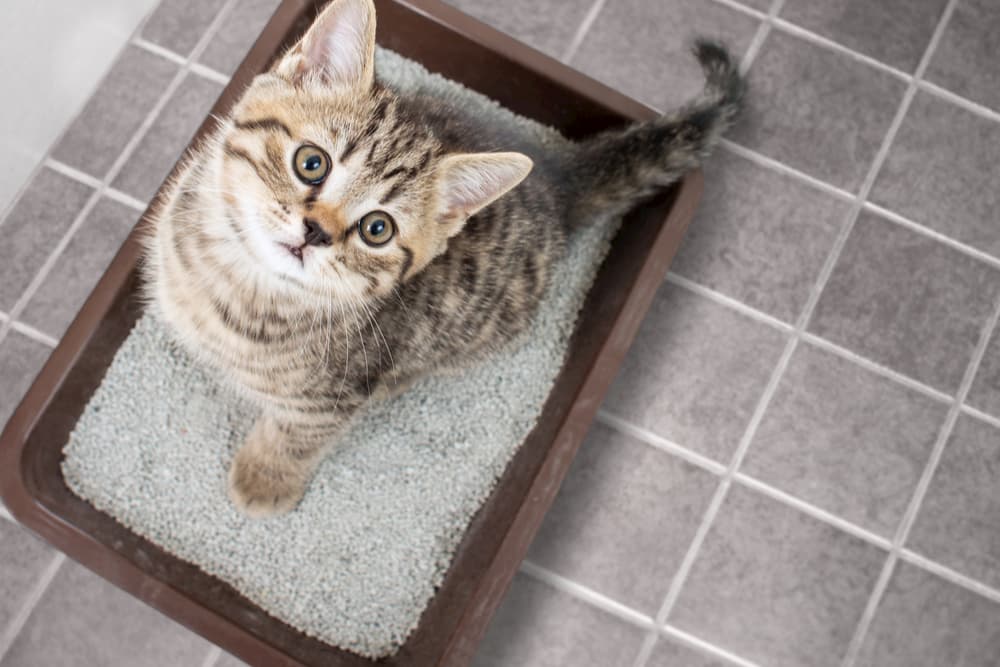Don't Flush Cat Poop Down Your Toilet - Maintain Your Home's Plumbing Integrity
Don't Flush Cat Poop Down Your Toilet - Maintain Your Home's Plumbing Integrity
Blog Article
What're your thoughts about How to Dispose of Cat Poop and Litter Without Plastic Bags?

Introduction
As feline owners, it's important to be mindful of just how we dispose of our feline close friends' waste. While it might seem hassle-free to purge cat poop down the toilet, this technique can have destructive consequences for both the setting and human health and wellness.
Ecological Impact
Purging feline poop presents harmful pathogens and bloodsuckers right into the supply of water, presenting a substantial danger to water ecosystems. These pollutants can negatively influence marine life and concession water quality.
Wellness Risks
Along with environmental issues, purging feline waste can also posture health and wellness risks to human beings. Cat feces may have Toxoplasma gondii, a parasite that can cause toxoplasmosis-- a potentially extreme ailment, especially for pregnant ladies and individuals with damaged body immune systems.
Alternatives to Flushing
Luckily, there are safer and extra accountable ways to dispose of cat poop. Think about the following choices:
1. Scoop and Dispose in Trash
The most common method of taking care of pet cat poop is to scoop it right into a naturally degradable bag and toss it in the garbage. Be sure to utilize a dedicated litter scoop and dispose of the waste immediately.
2. Usage Biodegradable Litter
Go with eco-friendly cat trash made from products such as corn or wheat. These trashes are eco-friendly and can be securely disposed of in the garbage.
3. Bury in the Yard
If you have a backyard, think about hiding cat waste in a designated area away from veggie yards and water resources. Make certain to dig deep enough to prevent contamination of groundwater.
4. Install a Pet Waste Disposal System
Invest in a pet garbage disposal system particularly designed for pet cat waste. These systems utilize enzymes to break down the waste, minimizing smell and ecological impact.
Final thought
Responsible pet possession extends beyond offering food and sanctuary-- it additionally entails correct waste management. By refraining from flushing pet cat poop down the commode and choosing alternate disposal methods, we can decrease our ecological footprint and protect human health.
Why You Should Never Flush Cat Poop Down the Toilet
A rose by any other name might smell as sweet, but not all poop is created equal. Toilets, and our sewage systems, are designed for human excrement, not animal waste. It might seem like it couldn’t hurt to toss cat feces into the loo, but it’s not a good idea to flush cat poop in the toilet.
First and foremost, assuming your cat uses a litter box, any waste is going to have litter on it. And even the smallest amount of litter can wreak havoc on plumbing.
Over time, small amounts build up, filling up your septic system. Most litter sold today is clumping; it is made from a type of clay that hardens when it gets wet. Ever tried to scrape old clumps from the bottom of a litter box? You know just how cement-hard it can get!
Now imagine just a small clump of that stuck in your pipes. A simple de-clogger like Drano isn’t going to cut it. And that means it’s going to cost you big time to fix it.
Parasitic Contamination
Believe it or not, your healthy kitty may be harboring a nasty parasite. Only cats excrete Toxoplasma in their feces. Yet it rarely causes serious health issues in the cats that are infected. Most people will be fine too if infected. Only pregnant women and people with compromised immune systems are at risk. (If you’ve ever heard how women who are expecting are excused from litter cleaning duty, Toxoplasma is why.)
But other animals may have a problem if infected with the parasite. And human water treatment systems aren’t designed to handle it. As a result, the systems don’t remove the parasite before discharging wastewater into local waterways. Fish, shellfish, and other marine life — otters in particular — are susceptible to toxoplasma. If exposed, most will end up with brain damage and many will die.
Depending on the species of fish, they may end up on someone’s fish hook and, ultimately on someone’s dinner plate. If that someone has a chronic illness, they’re at risk.
Skip the Toilet Training
We know there are folks out there who like to toilet train their cats. And we give them props, it takes a lot of work. But thanks to the toxoplasma, it’s not a good idea.

Do you enjoy reading about How to Dispose of Cat Poop and Litter Without Plastic Bags? Post feedback below. We will be interested to listen to your ideas about this blog posting. In hopes that you come back again in the future. Are you aware of somebody who is interested in How to Dispose of Cat Poop and Litter Without Plastic Bags? Why not promote it. I cherish reading our article about Don’t flush cat feces down the toilet.
Request A Quote Report this page